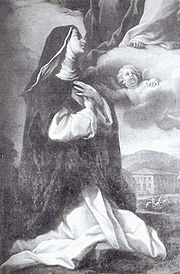| Revision as of 04:19, 6 August 2008 editMasterpiece2000 (talk | contribs)13,003 edits years are not wikilinked when alone← Previous edit | Revision as of 10:54, 6 August 2008 edit undoPoeticbent (talk | contribs)Autopatrolled, Extended confirmed users, Pending changes reviewers29,717 edits age as per date of birth; labor campNext edit → | ||
| Line 11: | Line 11: | ||
| The uprising organized by the Fareinigte Partizaner Organizacje (the United Partisan Organization) failed on September 1, 1943. What followed, was the final destruction of whatever remained of the Ghetto. Between August and September 1943 the last 12,000 men, women and children were deported to camps in Estonia. | The uprising organized by the Fareinigte Partizaner Organizacje (the United Partisan Organization) failed on September 1, 1943. What followed, was the final destruction of whatever remained of the Ghetto. Between August and September 1943 the last 12,000 men, women and children were deported to camps in Estonia. | ||
| In September 1943, Sister Bertranda was arrested by the Nazi German occupation forces. Her convent was closed and her order was forced to disperse. She was sent to a labor camp near Kovno.<ref name="Poray" /> After the war, Sister Bertranda voluntarily resigned from the Dominican order.<ref name=MP /> | In September 1943, Sister Bertranda was arrested by the Nazi German occupation forces. Her convent was closed and her order was forced to disperse. She was sent to a labor camp Perwejniszki near Kovno.<ref name="Poray" /> After the war, Sister Bertranda voluntarily resigned from the Dominican order.<ref name=MP /> | ||
| In 1984, the |
In 1984, the 78–year–old former Sister Bertranda, now living alone in ], as well as six nuns from her convent were awarded the title of the ] by ]. Abba Kovner, one of the young Jews saved by Borkowska, personally presented a medal to her at a ceremony in ].<ref name=MP /> | ||
| __NOTOC__ | __NOTOC__ | ||
| ==Footnotes== | ==Footnotes== | ||
Revision as of 10:54, 6 August 2008

Anna Borkowska a.k.a. Sister Bertranda (1906–1988), a graduate of the University of Kraków, was a Polish nun who served as the Mother Superior of a convent for an order of Dominican Sisters at a cloister in Kolonia Wileńska, near Wilno (Poland; now Vilnius, Lithuania). During World War II, she sheltered 17 young Jewish activists from the Nazi persecution at her convent.
Vilnius was taken over by the Germans on June 24, 1941 in operation Barbarossa and the killing of the Jews began almost immediately. Sister Betranda first agitated to save Vilnius’ Jewish population following the start of the Ponary massacre in July 1941. She initially sought to gain the support of the Vilnius Catholic leadership, but they rebuffed her efforts out of fear that the Nazi German occupation forces would destroy church property and kill any clergy found aiding the Jewish population.
Taking her own initiative, Sister Betranda gathered 17 members of Hashomer Hatzair, a local Zionist group and hid them within the grounds of her convent. Among the activists were: Abe (Abba) Kovner, the leader of the movement, Abraham Suckerwer, Arie Wilner and Edek Boraks. When several of her nuns objected to this action, Borkowska, the Mother Superior, reportedly threatened them with expulsion from the order and excommunication from the faith. Some of the Hashomer Hatzair members later decided to leave their convent hideaway and volunteered to return to the Jewish ghetto in Vilnius, where they organized an underground resistance movement.
The uprising
As soon as the preparations for the Ghetto uprising began, the Dominican Sisters took upon themselves to help the Jewish resistance factions by smuggling in arms and ammunition. Among the nuns were: Sister Bernadeta (Julia Michrowska), Sister Bertranda, Sister Cecylia (Maria Roszek), Sister Diana (Helena Frackiewicz), Sister Imelda (Maria Neugebauer), Sister Jordana (Maria Ostrejko), Sister Małgorzata (Irena Adamek) and Sister Stefania (Stanisława Bednarska). Sister Bertranda was the first to supply hand grenades and other weapons to the Vilnius ghetto underground.
The uprising organized by the Fareinigte Partizaner Organizacje (the United Partisan Organization) failed on September 1, 1943. What followed, was the final destruction of whatever remained of the Ghetto. Between August and September 1943 the last 12,000 men, women and children were deported to camps in Estonia.
In September 1943, Sister Bertranda was arrested by the Nazi German occupation forces. Her convent was closed and her order was forced to disperse. She was sent to a labor camp Perwejniszki near Kovno. After the war, Sister Bertranda voluntarily resigned from the Dominican order.
In 1984, the 78–year–old former Sister Bertranda, now living alone in Warsaw, as well as six nuns from her convent were awarded the title of the Righteous Among the Nations by Yad Vashem. Abba Kovner, one of the young Jews saved by Borkowska, personally presented a medal to her at a ceremony in Poland.
Footnotes
- ^ David C. Gross, The Jewish People's Almanac (Garden City, New York: Doubleday & Company, Inc. 1981), pages 465-466.
- ^ Anna Poray, Sister Anna Borkowska, "Polish Righteous, Those Who Risked Their Lives."
- ^ Paul, Mark. “Wartime Rescue of Jews by the Polish Catholic Clergy: The Testimony of Survivors”
See also
Polish Righteous among the Nations